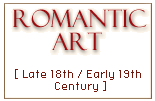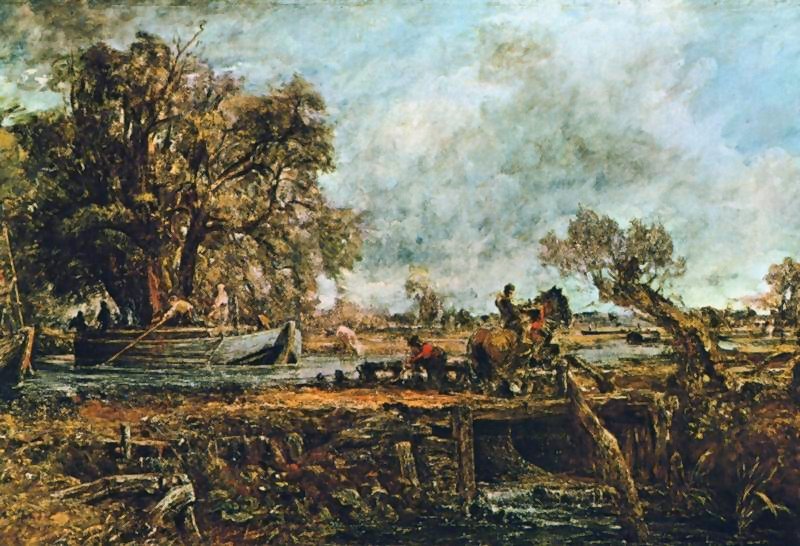| |
In this picture, similar in some ways to the Gainsborough painting we just saw, Constable has made small but significant changes. Note the apparent "roughness" of the image (Constable painted much of it with a palette knife rather than a brush), and its change in perspective: we are at eye-level with the boat and river, not looking down on it from a position of superiority; here a common river boat assumes a sense of presence and power it does not have in Gainsborough's similar painting. And while the animals are domestic, notice the barge horse: as the title indicates, it is in motion, in action, driving forward through the landscape, jumping over a barrier intended to prevent cattle from crossing the bridge; barge horses were specifically trained to jump these. (In earlier sketches of this work, the horse was riderless.) Just as it is in Romantic literature, the "ordinary" is celebrated in this painting: our water-level perspective gives us a good look at, of all things, a culvert. Constable himself once wrote, "The sound of water escaping from mill dams, willows, old rotten planks, slimy posts and brickwork, I love such things. These scenes made me a painter." The jumbled landscape and dramatic clouds reinforce the sense of motion and energy conveyed by the horse and rider, further breaking the bonds of Augustan stylistics.
|

